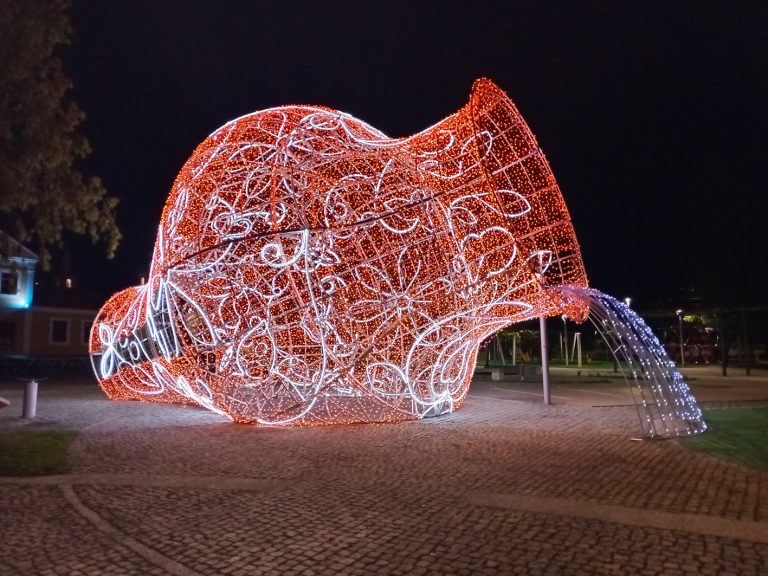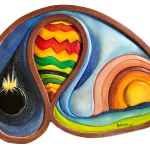Nisa is just over an hour’s drive from Estremoz, heading north towards the Rio Tejo. We’d been wanting to visit for a while, for three reasons: the ceramics, embroidery and cheese, which are all famous in the region!
Overnighting in a camper is very good with parking available in the town centre in front of the tourist office, with picnic tables, bins and WCs, although we preferred to park up at a small site with a fountain about 300 metres from the centre.
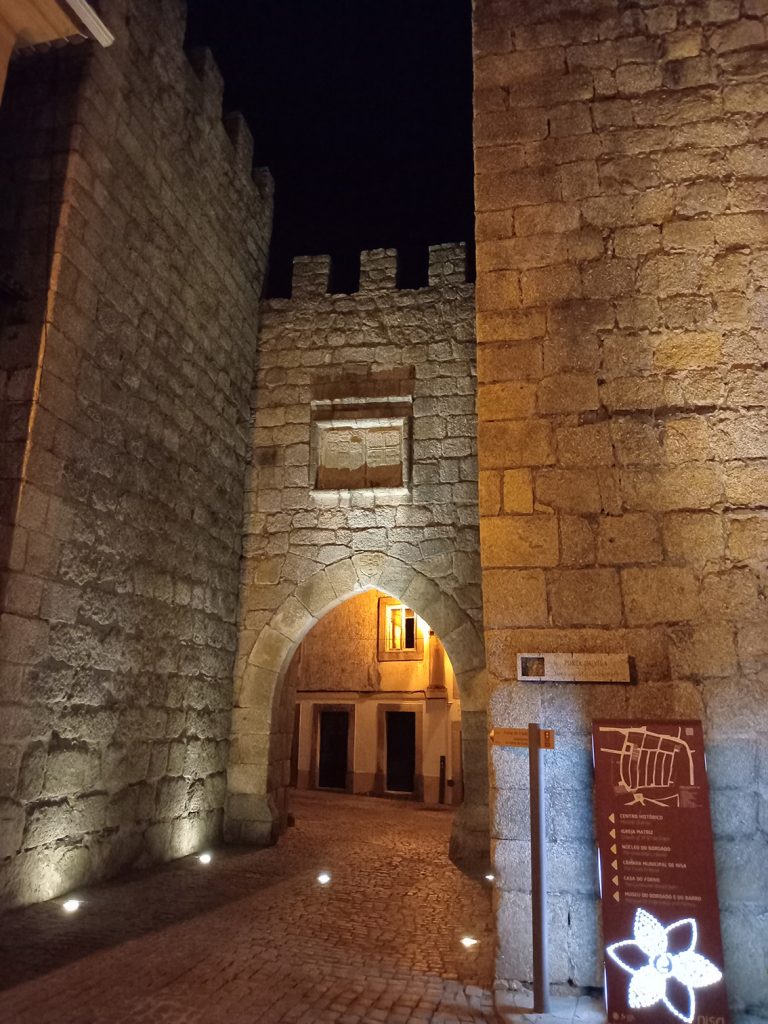 Nisa old quarter
Nisa old quarter
The old town of Nisa is contained within largely intact medieval walls, accessed by two main entrance gates. Wandering around the narrow streets is a delight and the main square houses the townhall, pillory post, a fountain and and ancient church that belongs to the Santa Casa da Misericordia. Passing through a roofed alleyway or tunnel you come to the even more traditional old quarter with tiny houses still lived in by both Roma families and the older generation.
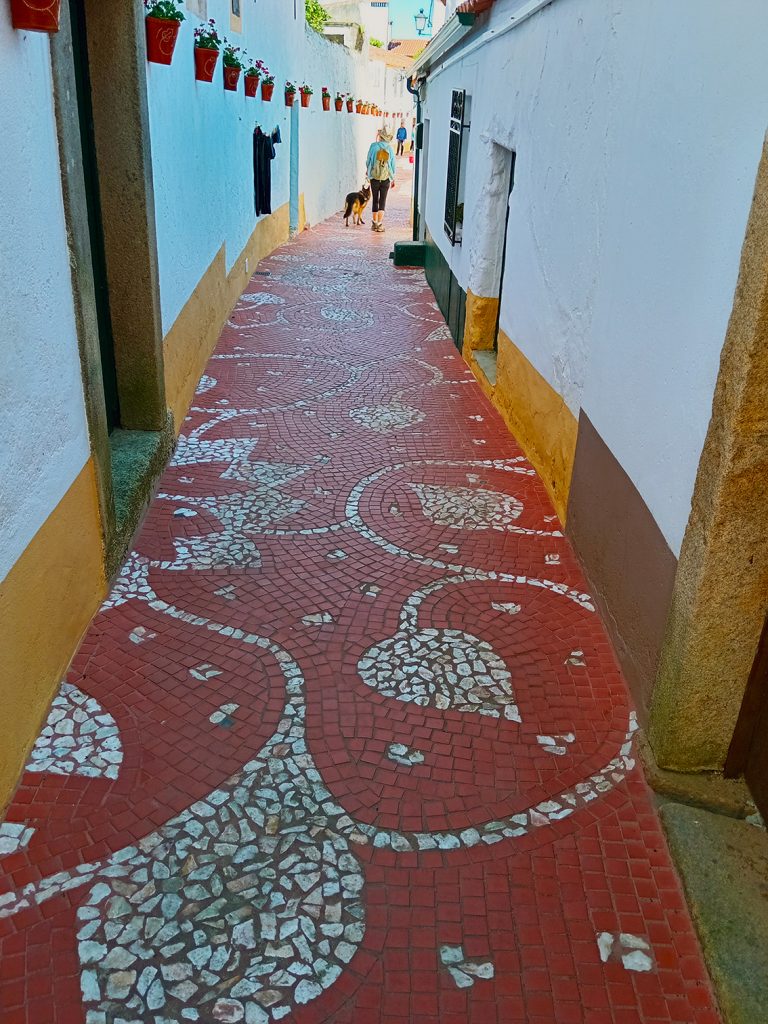 The tower of the Porta de Montalvão is built on top of a massive megalithic rock, for which this part of the Alentejo is renowned. Back in the old town we walked one of Portugal’s most famous streets, the Rua de Santa Maria, that mimics the famous Nisa pottery style. Lined with brightly filled flowerpots it was beautiful and when we were there the walls held an exhibition of artwork from local schoolchildren commemorating 50 years of independence on 25 de Abril.
The tower of the Porta de Montalvão is built on top of a massive megalithic rock, for which this part of the Alentejo is renowned. Back in the old town we walked one of Portugal’s most famous streets, the Rua de Santa Maria, that mimics the famous Nisa pottery style. Lined with brightly filled flowerpots it was beautiful and when we were there the walls held an exhibition of artwork from local schoolchildren commemorating 50 years of independence on 25 de Abril.
Another interesting spot to visit is one of the town’s communal ovens, Casa do Forno, where the townsfolk used to bring their dough to be baked into loaves. It was used well into the 20th century, in fact the one at Arneiro and other outlying villages are still in use today. Payment was that you left a loaf behind for the person who maintained and fuelled the oven.
Talking of baking, if you want to try some of the best brioche croissants, drop by Perola de Nisa in Praça da Republica. They bake everything on the premises and the cakes are to die for! The more modern centre of Nisa is pleasant with large gardens, fountains and statues. One unusual feature is a large installation lit up with lights at night depicting water flowing from a traditional Nisa pot.
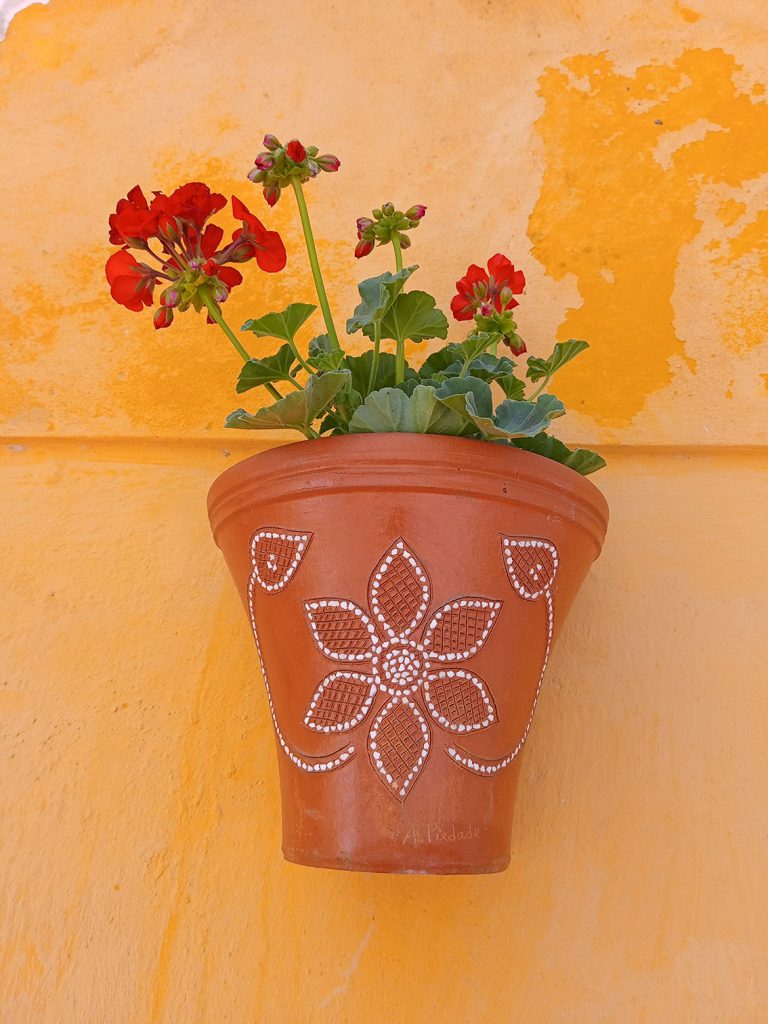 Handycrafts: pottery, embroidery and cheese
Handycrafts: pottery, embroidery and cheese
The Nisa pottery, which you can buy throughout the town, is famous in Portugal as it uses the orange/red clay, which is then decorated with tiny, inlaid quartz stones, hence the name Olaria Pedrada. Originally the pots were made to carry water, but today you can buy all kinds of items. Thursday is market day in the town, so we visited the municipal market to buy some of the local cheeses direct from the producers. You can also visit both potter’s studios (olarias), the embroidery district and museum (bordados) and cheese producers (queijarias), but for us that would have to wait for another time.
On the outskirts of the old town walls, there is a huge water-feature made entirely of industrial steel, that is well worth visiting. In fact, the whole town has water fountains and springs, some dating back to ancient times that can be visited by following one of the designated walks from the tourist office (PR10 Roteiro das Fontes), which takes in 16 fountaiins. We did part of it but prefer more open country like the PR9 Trilho da Mina de Ouro do Conhal.
All in all, Nisa is a historic little town, buzzy, beautiful and welcoming to visitors!

